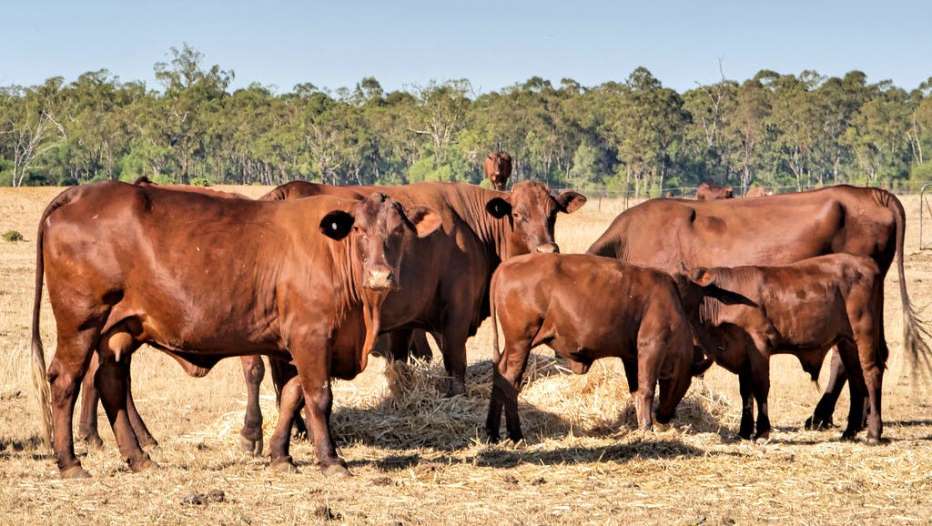
DISCUSSIONS around cow weight and its significance in a herd are perhaps not as frequently had as may be expected.
Cow weight can be a focus at times when seasonal conditions are more challenging, and there is some pressure on available feed. However when conditions ease, the attention to feed demand tends to be relaxed a little more.
Additionally, as noted in last week’s column (click here to access, along with readers’ comments) there is a tendency to forgive bigger cows if they are in-calf and rearing a calf.
However, cow weight is a critical trait within any breeding program. Managing weight effectively directly impacts the overall herd performance and productivity. A key part of management cows back to selection and the genetics that are being utilised within herds.
Over recent years EBVs for mature cow weight have been increasing. Data presented by the Angus Society in 2020 suggest the average increase was 2.5kg year. The graph below plots Angus mature cow weights (blue line), IMF and retail beef yield from 1999 to 2018.
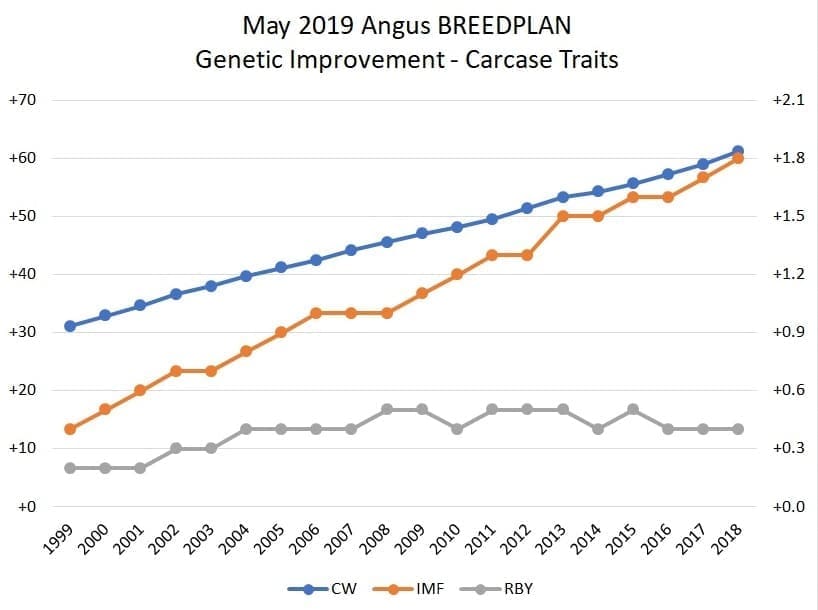
Looking at recent breed trends for other major breeds, the increase in mature cow weights have followed similar increases. For producers who don’t weigh or monitor their cows their feed demands can be dramatically increased in a short period of time.
This is particularly an issue for producers who work to a set number of breeders, based on a perceived carrying capacity, or other factors. While that number may once have been suitable for that environment, the increased mature cow weight of the herd and the increased feed demand, means the herd is now effectively running at a much higher carrying capacity.
The result of this is seen in cows failing to achieve their energy intake needs and therefore performing at lower levels of production than a producer may be expecting.
Key considerations
There are some key considerations around weight in breeding herds. An increase in weight, resulting in increased feed demand needs to be offset in some way.
As noted in last week’s column, Daily Dry Matter Intake (DMI) for larger cows can be up to 25-30pc greater than moderate-sized cows. This increased DMI needs to be offset by weaning a calf that is at least 25-30pc heavier than that of a smaller cow. This is a big ask for most cows.
Heavier cows do not often produce calves that are proportionally heavier than those from moderate-sized calves. As an example, if a 500kg cow weaned a 230kg calf, to be equally efficient, a 650kg cow would need to wean a calf that would have to be at least 287-290kg.
Most big cows may struggle to achieve this target. Weaning at 250-270kg, those big cows are only achieving a 9-17pc increase, which doesn’t offset the feed cost to achieve that slightly higher weaning weight.
In the research paper “Defining the primary business measure of liveweight production for beef cows in northern Australia” published by the CSIRO and written by Geoffry Fordyce et al, the impacts of weight and body condition score have been clearly outlined.
The data was recorded from more than 2100 Brahman & tropically adapted composite cows ranging in age from 2.5 to 8.5 years. The results highlighted that cows in a body condition score of 3-3.5 (on a 5-point scale) had a 90pc+ chance of conceiving in a controlled joining period, whereas cows in BCS 2 or lower had less than 50pc conception rates.
The paper also noted a 10pc loss of body weight could lead to a 3-4-week delay in cycling, which directly impacts calving rates – particularly for the first calving round.
In addition, cows that were too light (less than 450kg) had 30-50pc lower conception rates than moderate sized cows (500-550kg). Weight loss was also an issue not only for re-conception rates, but significant loss (15pc or more of body weight) places cows at 2 – 3 times greater risk or dystocia and or metabolic diseases.
Management decisions
While these risks are understood, at a practical level producers must make some decisions regarding how best to manage and mitigate them occurring within a herd. Longer-term, selection for more moderate sized cattle will help move towards a more balanced relationship between feed availability and livestock demands.
However, genetic selection is an approach that does take a longer time frame. It also requires producers to make more effort to capture and record herd details, particularly around the size and mature weight of the cow herd.
This data is important to better understand the emphasis to be placed on traits such as Mature Cow Weight.
In the shorter term, the data producers have on their cow weights and on body condition, particularly leading towards key events such as joining, and calving can be used to better match available feed to livestock needs.
As evidenced in the table below, improving Body Condition Score by 1 requires cows to gain significant weight and can only be achieved with sufficient energy levels per kilogram of Dry Matter.
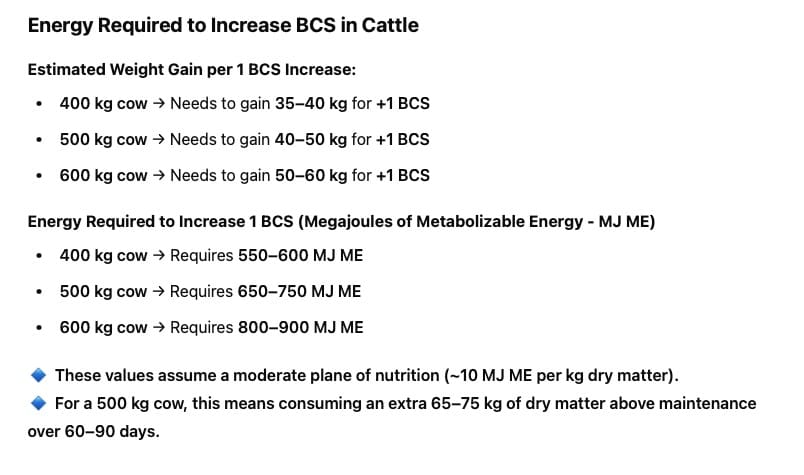
In the table above, the amount of weight cows need to gain to achieve an improvement in Body Condition increases significantly, with heavier cows requiring a disproportionate amount of energy to increase condition scores.
On a daily basis (Table below) this is a much higher degree of energy per kilogram of dry matter than required by moderate sized cows. The practical application producers need to consider is if they are increasing, or how they will increase the energy on offer to livestock to meet the actual herd demands.
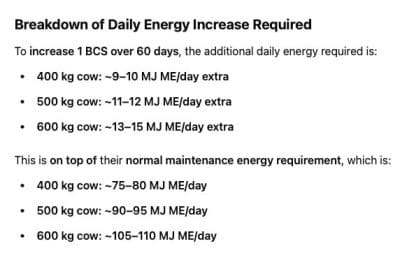
To avoid the risks that are associated with weight loss, the ability to more effectively match feed to cow needs is essential.
The issue of increased mature weight across herds is directly impacting the amount of energy that can be accessed from a properties feedbase.
In the short term, it may be that some herds will be as efficient, or perhaps more productive with fewer cows – that are more moderate in sized and more efficient, than running a traditional sized herd (of larger and less efficient cows).
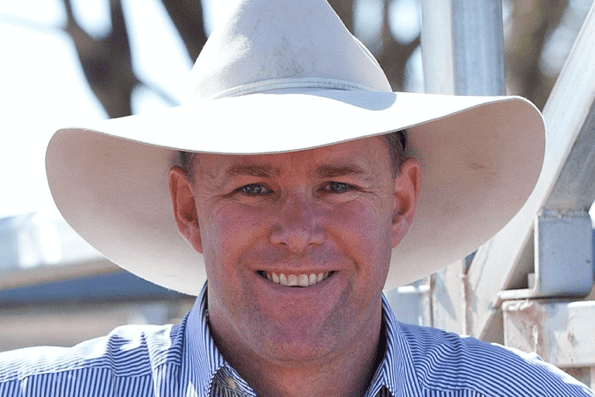 Alastair Rayner is the General Manager of Extension & Operations with Cibo Labs and Principal of RaynerAg. Alastair has over 28 years’ experience advising beef producers & graziers across Australia. He can be contacted here or through his website www.raynerag.com.au
Alastair Rayner is the General Manager of Extension & Operations with Cibo Labs and Principal of RaynerAg. Alastair has over 28 years’ experience advising beef producers & graziers across Australia. He can be contacted here or through his website www.raynerag.com.au

Re your concluding comment – “In the short term, it may be that some herds will be as efficient, or perhaps more productive with fewer cows – that are more moderate in sized and more efficient, than running a traditional sized herd (of larger and less efficient cows).” I believe this comment could apply over the longer term as well. If you extend your Angus society Breedplan example and assume that the increasing mature cow carcase weight was accompanied (over time) by a 5% improvement in growth rates in steers and heifers but no change in any other herd performance parameter such as weaning rate or mortality rate, an appropriate measure of the change in herd efficiency such as change in herd gross margin after interest would show a slight reduction (<2%). The changed beef herd would also show a slight increase in Green House Gas emissions (<1%). In other words, the herd manager achieving such a change over 20 years is unlikely to be in any measurable way more or less efficient (profitable) than they were at the beginning of the period. This is all done with a maintenance of equivalent grazing pressure and suitable adjustments to herd numbers. The herd manager who incurred costs in recording the data required to select for the change in herd parameters would be worse off again. Herd managers need to assess strategies designed to improve the efficiency of their breeding herd using an appropriate framework that takes all the expected changes in herd structure and performance of various herd components into account.